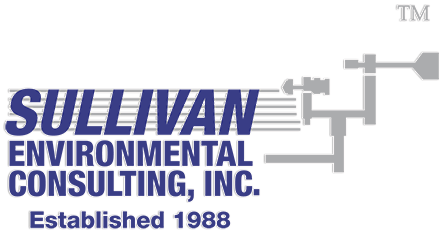- info@sullivan-environmental.com
- 1900 Elkin Street, Suite 200, Alexandria VA 22308
- (703) 780-4580
Sullivan Environmental has three meteorologists with experience in providing expert testimony involving air quality and meteorology. There are two Certified Consulting Meteorologists with over 45 years of experience each, and a meteorologist with 17 years of experience. Much of this work involves compiling representative emissions data and other model inputs, and running dispersion models to evaluate exposures to air pollutants, ranging from toxic air pollutants to heavy metals and odor-causing emissions. In some cases, measured data also are collected to provide direct points of reference with modeled concentrations. The analyses have ranged from small-scale analyses near major facilities to broader scale, including regional scale involving hundreds of square miles in scope. Different models and different options are required on a case-by-case basis. We do not specifically describe these matters in our web page or resumes. There is one exception, however, that can serve as a case study.
The Air & Waste Management Association (AWMA) presented a legal case study at its annual meeting in Chicago (June 2013). AWMA had a rather unique session where they invited the opposing attorneys on an air quality litigation matter to discuss the matter, and also invited David Sullivan as the plaintiff’s expert on the case to describe a case involving a secondary lead smelter in the Detroit, Michigan area. The facility operated from the early 1970s into the 1990s. There were emissions data for the stacks but no emissions data inventoried for the fugitive emission rates.
Some modeling had been performed by EPA for this facility. We started there, and then made incremental refinements to the modeling, adding in background contributions, and refining various model inputs. Much of the effort, however, was on estimating the emission rates for the fugitive emissions, which were not included in the earlier EPA modeling. There was a major disagreement among the competing experts regarding the magnitude of the fugitive emissions. Mr. Sullivan based his estimate on a peer-reviewed technical article. The opposing expert disagreed with the use of this reference and opined that it substantially overstated the significance of the fugitive emission rates, which were estimated to comprise more than 90 percent of the modeled impacts. By estimating the fraction of deposited lead within the 0-3 inch profile where extensive measured lead contamination data were available, the modeled deposition and measured soil were of similar magnitude. There was not much support in terms of measured air quality data, however, to resolve the difference of opinion.
There also were some anecdotal measured air quality data dating to the period of interest that were collected within the near vicinity of the secondary lead smelter. Sullivan Environmental had tried for months to obtain these data, which could be most definitively compared with the modeling of the airborne lead. Within a week of the jury trial, the report we had been seeking was found. There were 12 days with 24-hour integrated samples at three sites. It showed that the modeling based on the directly inventoried stack data plus the larger fugitive component was in very close agreement at all three monitoring sites. In fact, it showed that the modeled data were ~ 25 percent lower than the measured data, with the differences across the three sites to be 22 %, 7 %, and 44 % (for the site with the lowest impacts). The case proceeded to trial with solid backup support for the modeling in terms of both measured air quality and measured soil contamination data.
